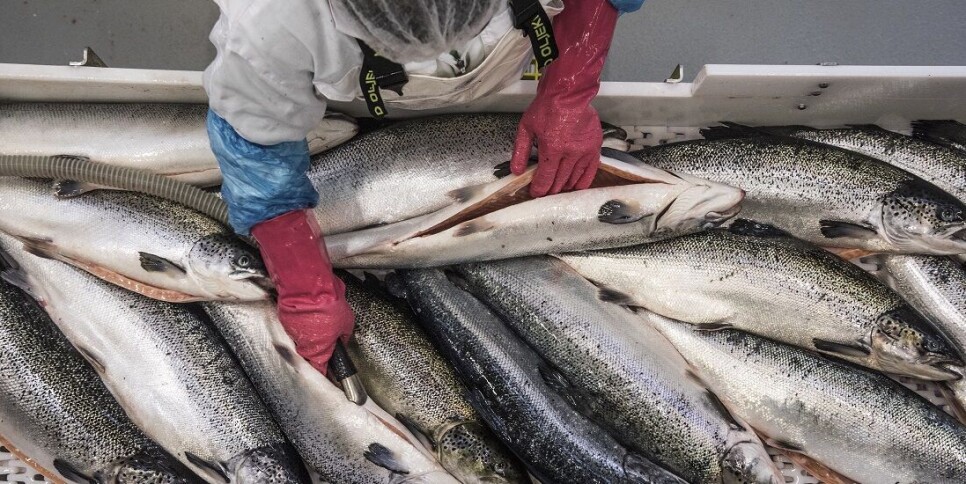THIS ARTICLE/PRESS RELEASE IS PAID FOR AND PRESENTED BY NTNU Norwegian University of Science and Technology - read more

Labour migration brings greater inequality to rural life
Income differences in small Norwegian towns have increased since 2004, when several former Eastern Bloc countries joined the EU.
“When the EU expanded eastwards, Norway had historically high labour migration. What was also new was that immigrants to a large extent settled in rural areas,” says Marie Holm Slettebak, a sociologist and doctoral fellow at NTNU.
Slettebak has dived into the numbers to study the connection between different types of immigration and income inequality in Norway since 2004.
After 2004, many municipalities that had no experience with labour migration took in a lot of labour migrants, Slettebak says.
Study confirms growing income disparities
It’s well known that immigration is typically followed by increased income inequality because the new population groups earn less than others. This is especially true when immigrants come from countries with considerably lower income levels than Norway.
Slettebak’s research confirms this income pattern. She has used data from Statistics Norway to survey all Norwegian municipalities from 2005 to 2016.
An important question is not just if the immigrants’ own income leads to increased income inequality, but if immigration also affects income inequality in the rest of the population.
Previous research in Norway indicates that some parts of the population benefit from labour migration while others lose.
“The question I asked was whether this immigration also affects the income of Norwegian-born people,” says Slettebak.
“I found evidence that this was true,” she said. “The income differences in the Norwegian-born population increased as a result of labour migration, but only in rural municipalities. The effect is present, but perhaps a little weaker than some people had feared,” she says.
Slettebak points out that labour migration is far from the whole explanation for the increased income disparities.
Norwegian-born and immigrants each in their respective labour markets
Immigrants from Eastern Europe mainly take jobs in agriculture, the fishing industry, tourism and the construction industry.
As to whether Norwegians in these occupations also earn lower wages as a result of labour migration, Slettebak says, “According to economic theory, a large supply of labour would push wages down. But this hasn’t affected Norwegians as much as you might think. The reason is that Norwegians don’t compete to a very great extent with working immigrants.”
“The labour migrants come and take jobs that Norwegians no longer want, for example in the fishing industry, which I investigated in this study,” she said. “In recent decades, we’ve seen an educational revolution and strong wage growth. Certain jobs are therefore no longer attractive to Norwegians.”
At the same time, she says, it’s possible to argue that jobs have become less desirable because wage growth in these occupations has stopped. Wages are stagnating in the construction industry, for example.
“So Norwegians have become too ‘good’ for these jobs and that the jobs have become less good,” she said.
Labour migrants remain low paid workers
Although the generalization of collective agreements has provided greater security against exploiting labour migrants, clear differences exist between the various groups of workers.
“Labour migrants are overrepresented at the low end of the wage distribution, while the Norwegian-born are overrepresented at the top,” says Slettebak.
Fishing industry an immigrant niche
Slettebak and Professor Johan Fredrik Rye have studied the fishing industry in particular. The industry has benefitted from labour migration for some time, and employment of immigrants really took off starting in 2004.
“Immigrants make up the majority of the workers doing manual jobs in the fishing industry. The fishing industry has become an immigrant niche,” says Slettebak.
She and Rye studied the mobility patterns of employees in the fishing industry. They followed everyone who had manual jobs in this industry from 2009 to 2018 and found a very clear pattern.
“Norwegians leave the industry much more often for better jobs or for better jobs within the industry. They have upward mobility and haven’t been pushed out. The majority of Norwegians have done well, and have fared the best when compared to labour migrants. Labour migrants tend to stay in the industry’s manual jobs,” Slettebak says.
At the bottom of the ladder
Non-Western immigrants came out the worst in the competition for good jobs and good wages.
“It’s really clear that non-Western immigrants have the fewest opportunities. Their chances of ending up outside the labour market are much higher. They have an unstable connection here and very few opportunities for upward mobility,” says Slettebak.
“One question that we don’t answer in our research is whether immigrants from outside Europe have been very negatively affected by the migrant influx following the enlargement of the EU in 2004. But a lot of indications suggest that if anyone is paying the price for the large labour force supply in the labour market, this group would be it,” she says.
Jobs – not immigrants – can save Norwegian settlements
Another question Slettebak has looked at is whether immigration can save rural Norwegian communities. She found that it wasn’t municipalities with large relocating populations and low birth rates that took in the most labour migrants.
“I found that relatively speaking, the rural municipalities that need immigrants the least, got the most. The solution for Norwegian municipalities threatened with residents relocating elsewhere doesn’t lie in the immigrants themselves, but in the available jobs,” Slettebak says.
See more content from NTNU:
-
Why are pregnant women in Norway so worried?
-
Politics on Facebook: Populist parties choose divisive issues on purpose
-
Social media is connected to cyberbullying – but not how we thought
-
Forskere ved NTNU får nesten 24 millioner av EU for å lage nye strømomformere
-
This helps the youngest children enjoy school more
-
Can we tap the ocean’s power to capture carbon?





































